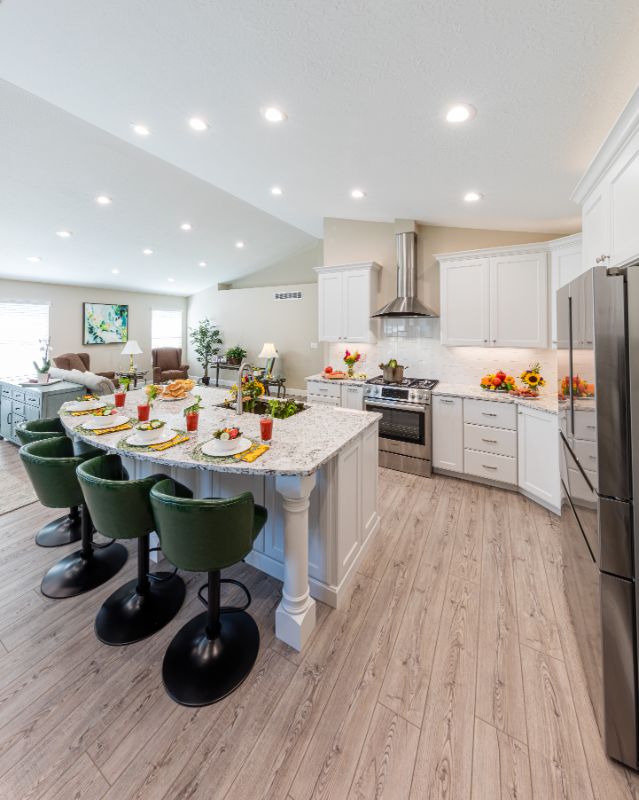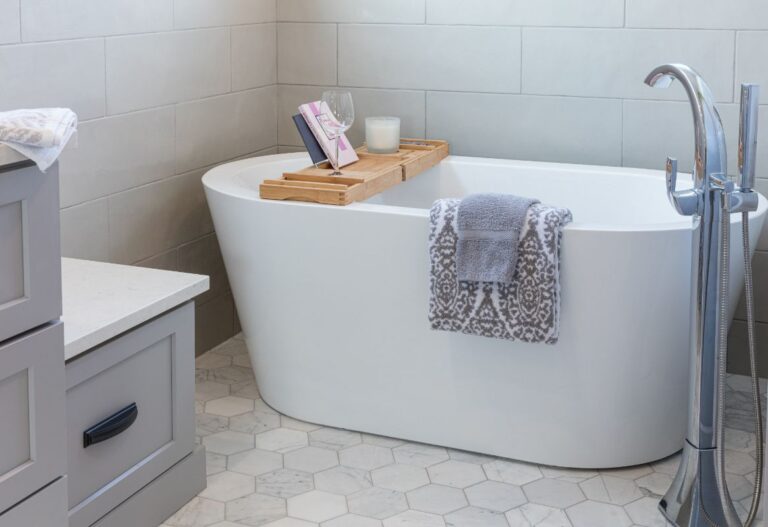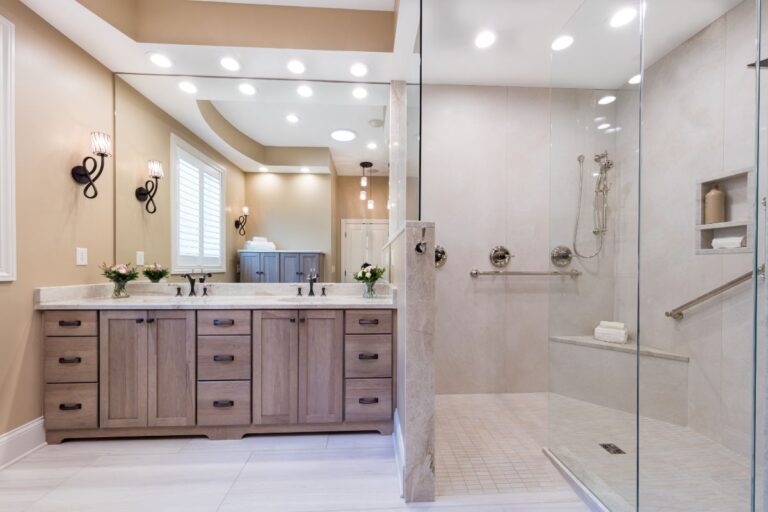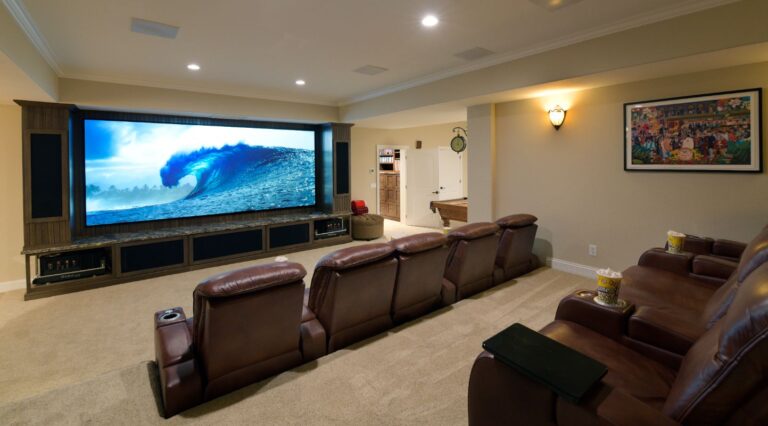Frequently Asked Questions
Wondering something about specifics?
Common questions our clients have
We’ve collected answers to some of the most common questions that we are asked by Miami Valley homeowners who are considering a home renovation project with Remodeling Designs. Check below to see if your question is on the list! If not, contact us today.
Kitchen Remodeling Questions.

The first thing to consider is the light source. Fluorescent lights tend to give off a very artificial light color. Halogen lights are extremely hot and are not efficient. LED lights are much more efficient and you can choose the color of your light. We tend to install LED can lights in the kitchen and put them on dimmers. We would rather have too much light and dim it down, than not enough. Lastly, you could consider a skylight. Even a skylight on the north side of the house will bring in a lot of natural light.
Islands take up a lot of space. If only one person cooks at a time, you need at least 36″ between the island cabinets and all other cabinets. When the island has seating on one side, the space should be more like 48″. If you can afford to have 42″ between cabinets, your kitchen will feel a lot less cramped.
The main problem with ceramic countertops is the grout. Staining of the grout is a real problem with the spills associated with work done in a kitchen. There are epoxy grouts that are more stain resistant, but of all the countertop materials, ceramic tile requires the most maintenance.
A number of things affect the cost of cabinets. Wood, stain, door style, and of course, construction quality. Construction quality is a separate subject itself, and we won’t discuss that here. Wood choice can affect the cost of cabinets. Typically, Oak is the lowest cost. Upcharges will apply for Maple, Cherry, Hickory (Pecan), Walnut, and some others. Painted cabinets are usually Maple cabinets because it takes the paint best. However, you can paint any species of wood. Some painted cabinet doors are MDF, or medium-density fibreboard. MDF is a manmade product that is more stable in the environment. It is less susceptible to warping, expansion, and contraction. As wood expands and contracts, a painted finish cabinet will show signs of the joints opening. This is a natural characteristic of wood, but with a light-colored painted surface, it is much more evident. Therefore, manufacturers offer MDF for doors that are going to be painted. The whole door may expand and contract, but it is one unit and does not show signs of the joints cracking. The other reason that white cabinets are more expensive is that the finish is very unforgiving. Every little nick and blemish shows. Consequently, it is much more labor-intensive to obtain a defect-free finish. Door overlay also affects the cost of cabinets. Inset doors are the most expensive. Inset doors are when the door of the cabinet sits inside the frame of the cabinet. Full overlay is the next most expensive and is when the door and drawer cover almost all of the frame of the front of the cabinet. This produces a much more unified or ‘custom’ look. It is also more difficult to get all the doors and drawers aligned properly so the minimal gaps between them are consistent. Standard overlay is when about 1″ of the frame shows all around the cabinet door and drawer. This is the least expensive and was most popular in homes built since the 60s.
Make sure your contractor has a plan to complete the work and a production schedule. Waiting for material to arrive is the greatest delay in completing a kitchen. Make sure the contractor orders the cabinets ahead of time if at all possible. Sometimes, it is not possible to do that if demolition and/or the design is complicated. Countertops are always custom-made. It may take several weeks to over a month to have them made. When you’re doing a kitchen remodeling project, plan to be without a kitchen for the entire length of the project. In today’s world, appliances are the longest lead item. In some instances, you might have to wait more than a year for your appliance package. Your contractor should be able to guide you through this process to minimize the effect this will have on your project.
The choices are endless. If you can dream it, we can probably get it.
Basement Remodeling Questions.
Yes there is. A minimum of 7′ is required below any beams, or heat ducts. The rest of the ceiling needs to be at 7’6″. This may pose a problem with older homes. We can use some creative framing methods to enclose the ducts while maintaining maximum headroom.


Bathroom Remodeling Questions.
That depends. One disadvantage is that your home will have one less bath. This becomes important if you are going to be selling your house in the future. Some people will like a large bath, but I believe most people would prefer two smaller baths. Why do you want to enlarge the bath? Don’t do it just to get a separate bathtub and shower. In today’s world, tubs are less important. Larger showers would probably serve you better now and in the future when age and mobility are factors.
I caution clients about whirlpools, especially smaller ones. 5′ whirlpools are quite small. Most only hold 45 gallons or so. Whirlpool tubs in general are also fairly loud. Most people say they do not use their tub as much as they thought they would. It gets used a lot in the first 6 months, but really tapers off after that. If you use your tub, and you use it religiously, you should have a tub.
My guess is that the last one was a reputable contractor and the other two were not. Check out NARI of Southwest Ohio (see previously answered question) for professional contractors. The reason the last contractor asked questions was that he was qualifying you. We do that so we don’t waste your time (and ours) by going over a project that is either not feasible, or not practical with your budget.
Like anything, you get what you pay for. We have many choices that are higher quality. The styles can range from Victorian to Contemporary. The finishes available are anything from chrome, to brushed gold, all the way up to 24K gold plating. Usually, there are accessories to match. Paper holders, robe hooks, and grab bars can all be ordered to have a consistent theme throughout the bathroom. If you’re looking for a more luxurious bathroom experience, heated towel bars are also available.
Heated towel bars, as long as they are a good quality and really work, could be a great investment. Cheap, plug-in towel bars will not heat your towel. They need to be hardwired on their own circuit and usually can be programmable. The same goes for heated floors. They do not use a great deal of energy and do not usually heat the room, however, they do make a tile floor much more comfortable to walk with bare feet. Heated mirrors allow the user to still use the mirror in the midst of a foggy bathroom or shower.
Home Remodeling Questions.

To make a window taller, or come closer to the floor, you will need to do some re-framing. But it usually does not require altering the load bearing, or structural part of the framing. In order to make a window wider, you will have to change the header of the window. This is much more involved because the roof or second story will have to be held up while the header is being replaced (the header is the framing that usually holds up the roof or second story). Obviously, to widen a window, is going to cost more than just making a window taller.
A Lead Carpenter is a ‘project manager’ for a remodeling job. Each company assigns different duties to their Lead Carpenters. Our company relies heavily on the Lead Carpenter to handle all aspects of the job. He can answer questions about changes in design, how much changes might cost, schedule all the different trades that work on a job, handle payments and invoices, and constantly monitor the job quality. The Lead Carpenter Concept is a company process in which one person is put in charge of a job. It used to be that a foreman would come around, tell the carpenters and trades what to do, then go on to the next job. This left the job without anyone really in charge, and overseeing the quality of the job. We feel the Lead Carpenter concept is the best way to give the customer the best possible customer service and quality job.
In one word; service. If you know exactly what you want, can pick it out at that store, and are prepared to stay at home supervising your remodeling project, then the installed sales (I.S. as they are called) department at the big boxes might be the way to go. Typically, the quality of installation and attention to detail is not an I.S. trademark. Neither is custom or out-of-the-ordinary work. A lot of things pop up during a remodeling project. Unforeseen damage or conditions are a daily occurrence. A remodeling company usually has the people to deal with these ‘things’ in a timely manner, and keep things moving. A remodeling company has greater flexibility to get the job done. Usually, the big boxes do not have the high-quality materials that people often are wanting. In fact, manufacturers will make lower-quality products to sell to the big boxes than those they sell to plumbers and remodelers. An apple is not always an apple when you buy from big stores. Like most things, there are situations when a big box store might be the right way to go, and there are times when it is best to have a professional handle the COMPLETE job. Every situation is different, but carefully compare estimates from each of these types of companies. Is it an apple-to-apple comparison? Usually not.
Questions About Cost.
Good question. There are a number of different factors that go into pricing a remodeling job. Check the obvious first. Make sure that every estimate has the same scope of work. If the estimates are so vague that you cannot decipher that information, go back to the contractor for clarification, IN WRITING, not just a “yea, its included” over the phone. If you cannot get satisfactory written results, eliminate that contractor from future bidding. The level of service given by a contractor greatly affects the cost. If the contractor spends lots of time picking out materials, attending to every detail, and taking care of all the little extras, so you don’t have to, it will cost a little extra. When a contractor carries all the proper and required insurances, his prices will be higher than a ‘pick-up contractor’. Quality of work, hard to show in a written estimate, is also a factor in costs. For example, our carpenters do very high quality work (their standards are usually much higher than our customers). Rarely, does the customer ever ask to have something re-done because of quality issues. That piece of mind is worth extra money up front to most people. This facet of the cost difference is usually only confirmed by calling references or visiting jobs the contractor has done in the past.
Some contractors will let you buy material, and others won’t. Remember, you are responsible if the material is damaged in the box or for any warranty work. What if a contractor shows up to do work, and you didn’t get everything required? If he charges you a service call because he came all the way out to your house and couldn’t do any work, or he has to run out and buy forgotten material, you probably just lost all the money you saved by supplying the material.
We’re sure you have heard to always get three estimates for any work you are going to have done. Well, that depends on a lot of factors. If a contractor has been recommended by a friend, you have seen his work and are satisfied with the quality, and YOU have met and talked with the contractor and are comfortable with him, then maybe you only need to get his estimate. If you feel his price is reasonable, we would say go for it. On the other hand, if you are getting bids from contractors that you have no personal experience with, get three bids. If the bids are within 10-15% of each other, then choose based on your comfort level with the contractor. If the three bids are really different, more investigation needs to be done. Either, a contractor forgot something and the bids are not “apples to apples” bids, or there might be something suspicious about a contractor with an “out of range” bid.
Questions About Remodeling Contractors.
Exactly what you paid for. Nothing. It takes a tremendous amount of time, effort, and expertise to accurately estimate a remodeling project. Good remodeling companies are professionals. Their time isn’t free. We will give clients budgetary estimates, but it’s a wide range based on projects we’ve done in the past. See our process to learn more!
The most reliable way to find a good company is getting a referral. Ask your friends and relatives. Personal, firsthand experience is the best. If you don’t know anyone who has had recent remodeling done, you can always search the internet. Looking at reviews on Houzz, GuildQuality, and Google can provide good results. Call the local National Association of the Remodeling Industry (NARI) office, (937) 222-NARI, and ask for information. Or, call the Home Builders Association, (937) 298-2900. Contractors who belong to these organizations are dedicated to running a professional business.
Hard questions: “How long have you been in business?”, “Have you ever done a project like this? Can you tell me about it?”, “DO YOU HAVE INSURANCE?”, “Will you be able to supply me with a list of references? Will it be more than 3 people?”, “Who does the work; you, your employees, or do you sub-contract out all the work?”, “What professional organizations does your company belong to?”, “Can you supply me with references from your suppliers?” Keep in mind, there are a lot of good craftsmen out there that are bad businessmen. Unfortunately, the bad businessmen will do the most damage to you. Find a contractor that you feel comfortable with, and has the right answers to the hard questions.
If he can’t prove his insurance, walk away. If a contractor can get to your job right away, be suspicious, a good contractor usually stays pretty busy. If he won’t give you anything in writing, walk away. When a contractor meets with you, ask yourself, “Do I feel comfortable with him? Does he seem genuinely interested in my project? Does he seem intimidating? “. YOU MUST FEEL COMFORTABLE WITH THE CONTRACTOR YOU ARE GOING TO WORK WITH!
It should contain a detailed proposal, including model numbers of materials (if chosen). You should be able to understand exactly what they are including. Don’t accept a proposal for a bathroom remodel that says “Remodel bathroom $3,500” written on the back of a business card. You should also have an agreement (or contract) between the two of you. This will protect both you and the contractor. Lastly, a production calendar should be produced so you know a general timeline of how long your contractor thinks the project will take.
A contractor should have you explain the project, a little bit about your home, and yourself and/or your family. They might ask you how long you’ve lived in your home and how long you plan to stay. They will probably ask about the time frame in which you’d like your project done. Good contractors can have a backlog of 6 months or maybe more. A good contractor will discuss the budget with you. If you hear “I’ll get back to you”, you probably won’t hear back. Talking about money and budget can be an uncomfortable discussion but you need to have a good understanding of where the contractor thinks he will be on the size and nature of your project. Likewise, your budget shouldn’t be a secret either. If the contractor doesn’t know what your budget is, he can’t design what you want/need.
First of all, with any remodeling project, there will be problems that arise. A good contractor will address problems quickly. He will come up with a solution, implement it, and the project will move forward. Be wary if a contractor keeps putting you off when you try to address problems.
First, licensed is not a valid term, unless he is a trade contractor (plumber, electrician, HVAC ). There is no jurisdiction around Dayton that requires general or remodeling contractors to pass a written test to perform business. Dayton and Springfield requires contractors to register for work done in their cities, so technically, a contractor is “Registered”, not licensed. Second, bonded. This usually means that a contractor has purchased a “Surety Bond” from his insurance company. In the event a contractor fails to complete the work, the insurance company will pay up to “the surety bond amount” to have work completed. Third, and MOST IMPORTANT, insurance. What kind of insurance? Maybe the contractor has his truck insured, and he says he is insured, technically, he is right to say “insured”. A contractor should have liability insurance in excess of $1 Million dollars. This would protect you in case, maybe, your house burns down as a result of the contractors negligence. The other form of insurance he must have is Worker’s Compensation Insurance. This protects you. If no Workers Comp Insurance is carried, and one of the contractors employees falls off of your roof, your Homeowners Policy could be responsible to pay. GET BOTH OF THOSE ‘PROOF OF INSURANCES’ BEFORE YOU SIGN A CONTRACT!!!!!
Questions About the Process.
The most important thing you can do is ASK QUESTIONS. If there is something that doesn’t look right, or you think you ordered one thing, and something else is being installed, ASK! A contractor wants to know if things are not right immediately. There are no dumb questions, remember, IT’S YOUR MONEY.
There will be dust and dirt in your house. It doesn’t matter how careful the contractor is, expect it.
Make it easy for the contractor to have access to your house. There will be times when he will have to leave and come back. Give him a key if possible. It will make your life easier to schedule.
If you are remodeling a kitchen, there are ways to set up a make-shift kitchen while yours is being remodeled. Most kitchen projects take 10-12 weeks. Arrange ahead of time with your contractor to have the refrigerator set up in an alternate location, away from the dust and dirt. You can set up a microwave, slow cooker, and even a one-burner cooktop if you’d like. You will not have your kitchen sink available for the duration of the project. If you are remodeling a bathroom, and it is your only bathroom, make arrangements to have the toilet reset each day it is pulled.
Ideas, Ideas, Ideas. People used to look through magazines to gather ideas. Now there are several different websites/apps that allow you to create “Idea Books” to help keep your thoughts all together in one place. One website is called Houzz and is strictly limited to the remodeling and home-building industry. On this site (or App), you can create an Idea Book, save photos, and share them with your contractor. You can create multiple Idea Books for different spaces. Pinterest also has the same capabilities, but it is saturated with more “ideas” than just remodeling. We find that photos on Houzz tend to be much higher quality. Organize your project on a scale of ‘wants and needs’. There are certain things that must be changed in your home, some things that would be “nice to have”, and still others that are just “luxuries”. Have a priority list!
When you’re ready, pick up the phone and call those referrals. A good remodeling contractor will pick up their phone and you should be able to talk to someone. Most websites now have a “Contact Us” page. You can fill out an online form and send them your information. Again, a good contractor will call you within one business day. Here’s our form if you’d like to get started!
There are many factors that determine the time it takes to complete a project. Obviously, the scope of the project is the largest factor. A small bathroom remodel won’t take as long as a room addition project. Some things such as custom-fit cabinets or made-to-size shower doors cannot be ordered in advance. This will delay the completion of the job. Countertops are another made-to-order item. When the base cabinets are set, the countertop contractor comes out to measure the tops. Fabrication time will take anywhere from 3-6 weeks. Each job will take a different period of time to complete. It’s also important you receive a production calendar from your contractor so you know how long to expect it to take.
Sometimes, the client is responsible if there is a delay. They might not pick out a tile in time or make a change that will cause the contractor additional work and time. Hidden conditions also can add to the time of a project. While good contractors try to find most things up front, there is no such thing as X-ray vision. Depending on the extent of damage, more time (and money) may be required to fix it. We try to tell our clients a ‘worst case’ time frame, but we will not rush a job to finish on time and sacrifice quality. We have found that the homeowner would rather it take a little longer and get a nice quality job.
A change order is a form signed by the client authorizing the contractor to do additional work not stated in the contract. It is in the best interest of both parties to have a signed change order before additional work is started. But, in a practical sense, the contractor may do the work before getting the change order signed to keep the job moving. Usually, the amount specified on the change order is due when the work is completed. Most times, a change order is written when the client adds something to the scope of the project, or the contractor finds hidden or unforeseen damage.

Expect More. Get More.
Amazing homes start here.
The first step towards making your dream remodel a reality is just a click away.